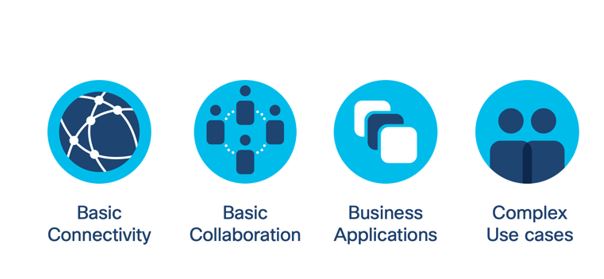Right now, every business is struggling with how to keep running while keeping their employees and customers safe. Companies are putting in drastic measures such as canceling events, eliminating business travel, in-person meetings and implementing remote work policies. Cisco is actively dealing with these topics, and we wanted to share some of the practices they are putting into place to address business continuity in the short and long term.
Business continuity of customers and partners is Cisco’s priority in this unprecedented time. Here are some of the things they are doing to support customers:
- Donating videoconferencing and networking solutions to medical facilities and doctors on the front lines
- Expanded the capabilities on their free Webex offer in all countries where it is available
- Giving free new or expanded licenses to Cisco Umbrella, Duo and AnyConnect security products
- Working through how to enable remote work most effectively, while keeping safety at the forefront
Ensuring connectivity, collaboration and more for employees
Cisco IT took a broad view of global remote access for its employees and developed a four-layer framework to put the business and IT capabilities in place. The four layers are:

- Providing base-level Virtual Private Network (VPN) connectivity
- Ensuring that basic collaboration tools such as email, Webex, voice, instant messaging are functional and reliable
- Determining appropriate access to critical applications, function by function in areas such as engineering, sales and Customer Experience (CX)
- Investigating connectivity for key CX partners into Customer Service and Technical Assistance Centers
Let’s take a closer look at this four-layer framework:
Connectivity – VPN allows employees to work from home
VPN expansion started recently due to the need to support employees working from home in the Asia Pacific, Japan and China region, and Cisco expanded capacity (bandwidth, IP pools, etc.). In Europe, Middle East and Africa, overall capacity is good, but needs additional resiliency. In the Americas, Cisco is increasing resources at its U.S. campus in Research Triangle Park, NC. VPN access points can also be set up to automatically redirect and globally distribute traffic as needed.
The team is also looking at a configuration change called “split tunneling” to optimize traffic. Currently all traffic comes back to Cisco while connected via VPN. For known good internet connected services, such as Office 365, WebEx and Salesforce, they can send that traffic directly through the internet without the need for it to come to Cisco first.
Collaboration – Cisco’s virtual conference solutions
- Webex Meetings – A lot of traffic goes back and forth between Cisco and Webex. Beyond the standard Webex meeting traffic, Webex leverages Cisco’s call control infrastructure. Currently they are only using about 12 percent of their total capacity between Cisco and Webex. If needed they also have agreements to increase their interconnects by using additional bandwidth, albeit at a higher rate. Since they already use Webex for most Cisco meetings, they do not anticipate a major change in traffic patterns due to remote work.
- Webex Teams – Overall, this is a low bandwidth application for messages. It is also available directly over internet. Split tunneling VPN for work from home employees could further reduce some of the traffic to Cisco.
- Email – Cisco uses Office 365, directly accessible via internet, which is overall a low bandwidth application. Split tunneling VPN for remote workers would further reduce traffic to Cisco.
- Voice – Most employees are likely to use mobile or home phones. CVO or IP voice clients are much less common.
Business applications for remote work
Cisco is ensuring that business-critical applications can perform securely in the expanded infrastructure. They are building critical application lists for each function, including engineering, sales and CX. The initial assessment is that most business-critical applications will be available via VPN to those who work from home.
Complex use cases, partner services
Cisco’s global team has more work to do to enable remote access for its call centre workers, so that call centre calls can be routed directly to representatives working from home. And, as many recent conferences and events have been cancelled, and travel is restricted for some, Cisco is looking at the best ways to host a large virtual conference or meeting and help customers do the same as needed.
Cisco hopes that by sharing some of its own experiences, best practices and free resources, we can work through this uncertain time together.
Cisco product offers to support remote work
- Cisco expanded the capabilities on its free Webex virtual meeting offer in all countries, and provides free 90-day licences to businesses who are not Webex customers
- Cisco supports customers with the expansion of free security offers for Cisco Umbrella, Duo and AnyConnect
To explore Cisco remote work solutions further visit cdw.ca/cisco or call 888.439.2392.







